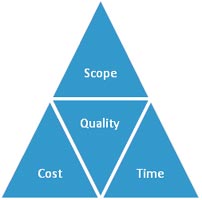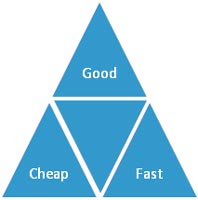That is all good and well, but how do you go about defining the success of your projects, and are there any limitations or constraints in your way to achieving success? Is it as simple as saying that a project completed within the designated timeline, budget and scope is successful? Definitely, but there are still some grey areas that require closer exploration: defining the playing field and the rules of the game.
We are all aware that there are tolerance levels around those three factors, agreed up front with the client, that still allow for successfully completed projects. It is also vital to remember that any failures can be turned into success, either for your current project or for future ones.
Before defining the tolerance levels and boundaries, it is vital to document each constraint and the work pertaining to that section.
What are the project constraints?
Every project has constraints and limitations, which could be budget limits, deadlines or specific business requirements. To define these, the correct individuals must ask and answer the correct questions.
- Scope: What is the scope of the project? Are there any portions of the scope not critical to the completion of the project? Can certain parts of the scope be completed after the deadline?
- Cost: Is there a fixed budget that cannot be exceeded? Does the client have fixed quarterly or annual budgets that are the limit of their project expenses? How much? Who approves? What is the budget approval process?
- Time: What is the project duration? What drives the deadline? Is there social media or some form of advertisement happening at a specific date that enforces this deadline?
Note: It is extremely important that all of these are approved and signed off by the client. It will ensure the safety of all parties and assist with keeping a healthy relationship.
Getting these answers from your team and from the client could be a continuous tug of war while you decipher all the jargon. Not to mention the continuous babble of individuals trying to provide answers to your questions, but ending up trying to sound smart rather than addressing your issues. Do not be part of this overzealous corporate gaggle when the question requires a simple answer in simple terms.
Defining the tolerance levels
The triple constraint triangle is an awesome way to define your tolerance levels by measuring the importance of the constraints that you have defined.
Each leg of the triangle defines a constraint that directly affects the other legs. All three legs affect the quality of the product provided.
If the scope and cost have the least amount of tolerance, the time constraint would have the most. This is valid for the other iterations: for example, if time and scope have the least room to be adjusted, it will affect the cost of the project.
Multiple pre-defined boundaries can be defined for each leg - for example, tolerance percentages on time and budget or specific portions of the scope that aren't a priority for completion. These boundaries need to be properly documented and agreed to by all stakeholders.
To over-simplify the triple constraint triangle and to quickly work out which area allows for the most tolerance within your project, the following could be used:
If the project needs to be high quality (good) and done within a short time period (fast) it will most likely come with a high price tag (NOT cheap). The higher the quality of the product and speed, the higher the cost will be.
This works for all the other variations of the triangle: for example, low cost and high speed products will most likely lack in quality, and high quality products for a low price will take a longer period of time.
To summarise this, an increase of two sections of the triangle might lead to a negative effect of the third.
What do we get from all of this?
From the above information, one can deduce that it is vital to identify the project constraints and the associated tolerance levels.
The success of a project can thus be defined by the following sentence: complete the project within the designated timeline, budget and scope without exceeding the approved tolerance levels of each and adhering to the agreed quality levels.
A mouth full of jargon, but true.












































